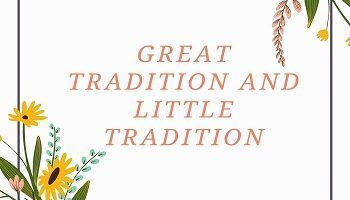Table of Contents
Concept of Varna:
Literally meaning colour, this term is mainly used to describe the system of social stratification of the Aryans of the Vedic age. According to Sri Yaskacharya, Varna is derived from the root Vri, meaning choice, implying that Varna is that which a person chooses according to his nature or work. Originally, it appears, Varna was used to differentiate fair-complexioned Aryans from the dark-complexioned non-Aryans. Later on, the word was used to describe the four social classes- Brahmin, Kshatriya, Vaishya and Shudra- denoting respectively, the teaching and priest class, ruler class, business class and physical labourer class.
Theoretically, all Aryans belonged to one of the four classes, though a sharp distinction was made between the three higher classes and the fourth the Shudra. The fact that the earliest Rig Vedic references mention only the first three have led to the speculation that the Shudras comprised exclusively of people of non-Aryan origin after their subjugation. Indeed, the first three are also known as Dwija (twice-born) the initiated while Shudras were not allowed to be initiated.
This four-fold division was, in theory, functional. Each had its duties well laid down. The Brahmins were enjoined to study and teach, to perform yajnas and sacrifices, to give and receive gifts. The Kshatriya must protect the people, sacrifice and study, the Vaishya, in addition to sacrifices and study, must also till the earth, breed the cattle and trade, while Shudras duty is only to serve the three higher classes (The Laws of Manu).
The root of the Varna System, quite clearly, is the division of labour, not unlike the later, caste system. But it was not optional, as is popularly believed nor transition from one Varna to another was allowed. Moreover, this idealized division of labour is hardly ever wholly reached. We shall see these four Varnas in some detail-
Brahmin:
The word itself means ‘one possessed of Brahama’ a supernatural impersonal power ruling the universe. There were two types of Brahmins the learned in Shastras, who performed all the rites of Aryans and received great respect, upholding the Great Traditional Vedic ideals, and those village Brahmins who earned much of their living by fortune-telling and maintained the Little Tradition. Even among the first group were further subdivisions- the legendary Rishis who composed Vedic hymns; the Munis who lived their own ascetic life in forests; the Purohit, Ritvij, Hotri, Udgatri etc. who helped in sacrificial ritual. Often the Brahmin lived under the patronage of a king or a chief. Usually, they were granted tax-free land, to be tilled by the peasant, who, in turn, paid their rents to the Brahmin. But there were also the Brahmins, who following Apad-dharma, took recourse to a number of trades and professions, including posts in the government, engaging in agriculture and trade, though such Brahmin was not held in as great esteem as true priests and teachers.
Kshatriya:
Also called Rajanya, their duty was protection, fighting in a war and ruling in peace. The Kshatriya sword and Brahmin ideology were the twins who ruled the country. In later periods, the Kshatriyas often claimed superiority over Brahmins, by virtue of their military and political power and the fact that they fed the Brahmins. From great emperors to petty chiefs, the Kshatriya class was recruited from all races and ranks, and every invader, down to the coming Muslims, were accorded a place in the social order this way. They also claimed and received, certain privileges particularly those related to personal pleasures and enjoyments. They kept large harems, concubines and marriage by capture were permitted to them. They could drink, punish at will and their will was law, in so far as it did not affect the upper echelons of priests.
Vaishya:
These, the mercantile class, though theoretically a part of Aryan order, were as referred to in “Aitareya Brahmana”, “paying tribute to others, lived on by others, and oppressed at will”. He was mainly a wretched cultivator or petty merchant, and a source of profit to the higher two classes. Apart from agriculture and cattle breeding, according to Manu, he also dealt in clothes, jewels, metals, perfumes etc., and national and international trade came within his purview. In later times, as Buddhist literature shows the Vaishyas were powerfully organized in guilds, and many of them lived in great luxury. Wealthy ones were respected by the kings and enjoyed their favour and confidence. Their influence steadily grew and it was by their support that Brahmanism could be upstaged by Jainism and Buddhism.
Shudras:
The lowest in the order, the Shudras were not Dwija, not initiated. They were the “servants of another, to be expelled at will, to be slain at will”, in the words of Aitareya Brahmana. They were not considered as regular Aryans, and their origin is doubtful. They may have been the conquered non-Aryans. Later on, those who were excommunicated due to various omissions and guilt were considered Shudras, as were those born illegitimately. Shudra was to wait on his masters, eat his leftovers, wear his cast-off clothes, and live in separate huts meant specially for them. He was not allowed to hear or repeat the Vedas. They had no scope for happiness and whose only hope was a rebirth in higher social class. Like Vaishyas, they too eagerly embraced and supported Buddhism and Jainism, who theoretically made no class distinction in religious affairs and much later, Islam, which also presented a theoretically egalitarian ideology.









Comments (No)